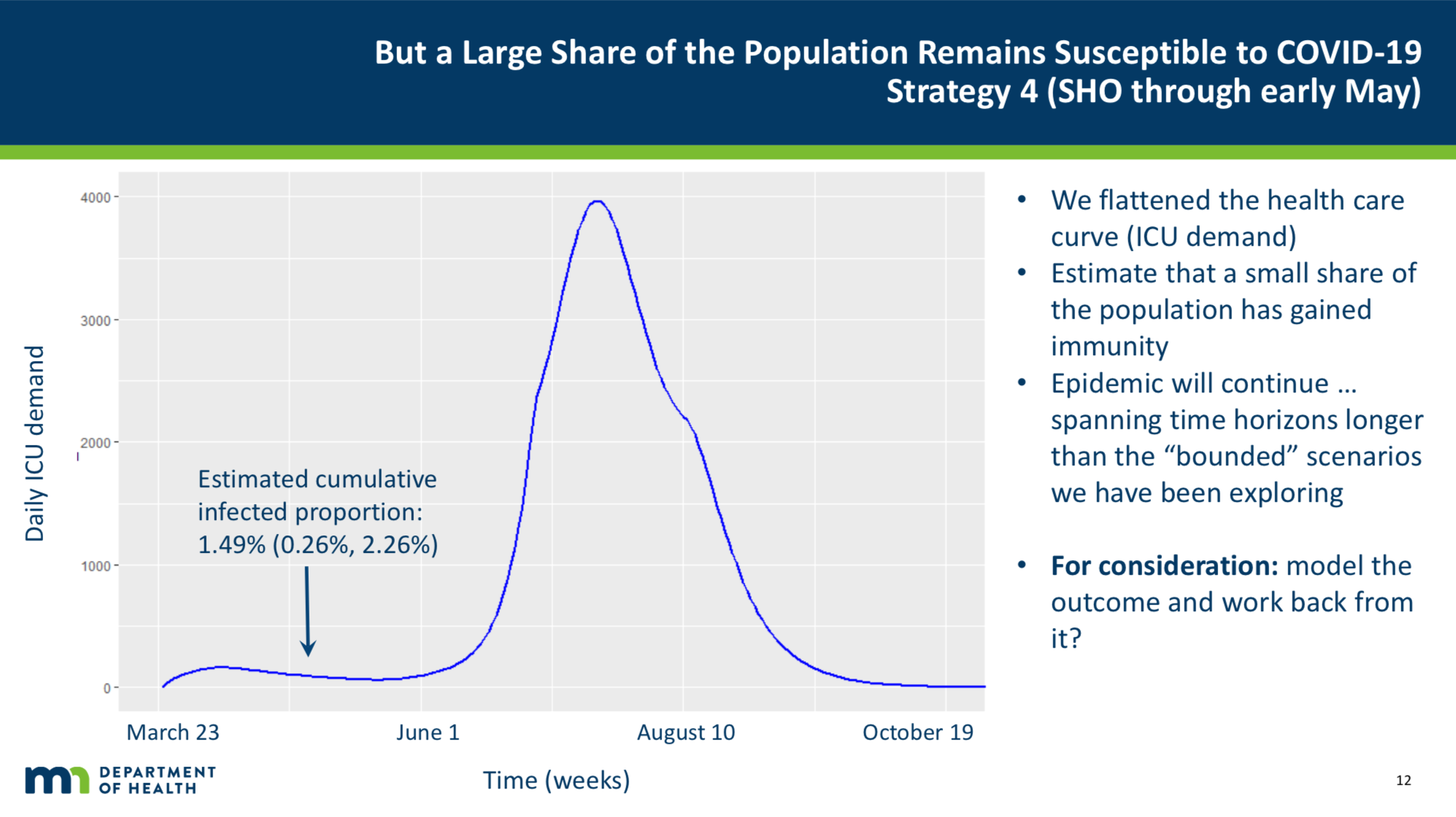The University of Minnesota (UMN) says it developed the predictive models used to justify Governor Tim Walz’s economic shutdowns in one weekend, enlisting the help of students.
The mathematical models used to justify Minnesota’s sweeping economic shutdowns amidst the coronavirus were hastily developed by a team partially composed of students who did not have time to fully validate their work, according to a release by UMN that boasts about the speed with which their model was created.
“I don’t think a lot of researchers get to work on something over the weekend and have public figures talk about it and make decisions based on it three days later,” says associate professor Marina Kirkeide who just completed her undergraduate degree last year. “[In this situation] you don’t have the time to validate as much as you normally would,” she adds.
Associate Professor Eva Enns who also helped build the models admits in the University release that her work cannot be used to make predictions with a great degree of accuracy, and that uncertainty figured greatly into the models’ construction. “We need to build in uncertainty as a clear message,” she says.
The University also concedes that the accuracy of its models are limited because statisticians don’t know how many people have cases of COVID-19 that are so mild they go undetected.
Yet another confounding factor is the use of data reported by the ruling Communist Party of China.
Since the first of April, the US has known that the statistics China has reported about coronavirus are inaccurate according to a report delivered to the White House, per the Daily Caller. However, this did not stop the UMN from factoring in China’s unreliable statistics, a move which State Representative Jeremy Munson criticized harshly via Facebook, Thursday morning.
“These kids also weighted the public health system of China in their model – using communist healthcare outcomes versus the private healthcare system in Minnesota which is the best in the world,” he noted before asking his constituents if they are “comfortable with the Governor making all his decisions based on this model?”
David Strom, the founder of Essential Minnesota and a project director working with the Minnesota Business Alliance also expressed his disappointment in learning how the models were created.
“[Walz and the Minnesota Department of Health] more than implied that this was some super sophisticated model coming out of our outstanding world leading school,” he remarked to Alpha News. “Minnesotans had the right to expect that this was done by some of the top experts,” he added.
Strom was also clear that he believes that students involved with this project are not to blame personally for any failings of the model. “I don’t blame the kids, good on them,” he said. “I blame adults that think that somehow it’s appropriate to basically drop a bomb on our economy… based on the work of grad students.”
After criticism of students’ roles in creating the models began to circulate online, UMN added an editor’s note to their original statement. This note clarified that while students did work to “expand the R programming code” that the model runs on, they did so “under the direction and thorough review” of the project’s leads.
The editors also noted that project leads Enns and Dr. Shalini Kulasingam have previously worked on other modeling projects that have predicted the spread of pertussis and chlamydia in Minnesota. 555 Minnesotans contracted pertussis last year, according to the state.
This is not the first time Minnesota’s models have been the subject of skepticism. For weeks after Walz began citing the models as justification for his COVID-19 response, the mathematics behind the predictive metrics were kept hidden. After they were unveiled, the public saw just how inaccurate the University’s predictions may be. At the time that the models were made public, their official prediction for the total number of Minnesotans who are expected to die of coronavirus was between 9,000 and 36,000 according to the Pioneer Press. As of May 15, 663 Minnesotans have succumbed to the virus, per the state Health Department.
More recently, State Senator Roger Chamberlain, along with dozens of other concerned Minnesotans, raised questions about a strange note that appeared to accidentally included in a presentation about the model published by the Minnesota Department of Health.
“For consideration: model the outcome and work back from it?” the note reads. Spetics claim this as evidence that the the models may be skewed to justify a certain set of conclusions.


















